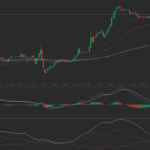 Friday’s trade saw USD/CAD within the range of 1.3037-1.3200. The pair closed at 1.3164, climbing 0.57% on a daily basis, while marking its sixth gain in the past ten trading days. The daily high has been the highest level since October 2nd, when a high of 1.3270 was reached. In weekly terms, USD/CAD surged 1.96% last week, or at the steepest rate since the week ended on July 19th, when it went up 2.47%.
Friday’s trade saw USD/CAD within the range of 1.3037-1.3200. The pair closed at 1.3164, climbing 0.57% on a daily basis, while marking its sixth gain in the past ten trading days. The daily high has been the highest level since October 2nd, when a high of 1.3270 was reached. In weekly terms, USD/CAD surged 1.96% last week, or at the steepest rate since the week ended on July 19th, when it went up 2.47%.
At 10:11 GMT today USD/CAD was down 0.17% for the day to trade at 1.3144. The pair tested the daily S2 level, as it touched a daily low at 1.3137 at 8:35 GMT.
Today USD/CAD trading may be influenced by the macroeconomic releases listed below.
Fundamentals
United States
New Home Sales
Sales of new single-family homes probably fell to the seasonally adjusted annual rate of 550 000 in September, according to market expectations, from 552 000 reported in August. The latter has been the highest level of sales since February 2008, when a figure of 575 000 was reported. Sales in the Northeast went up 24.1% in August, those in the South were up 7.4%, while sales in the West increased 5.4%. On the other hand, new home sales in the Midwest were 9.1% lower in August compared to a month ago.
The median sales price of new houses sold was USD 292 700 in August, while the average sales price was USD 353 400. At the end of the month, the seasonally adjusted estimate of new houses for sale was 216 000, which represents a supply of 4.7 months at the current sales rate, according to the report by the US Census Bureau.
This report has a significant influence on the Foreign Exchange market, because increasing new home sales can lead to a rise in consumption, for example. The new home sales index is also an excellent indicator of any economic downturns or upturns due to the sensitivity of consumers’ income. When, for instance, new home sales drop over several months, this usually is a precursor to an economic depression.
In case a lower-than-expected level of sales is reported, this would have a strong bullish impact on the US dollar. The Census Bureau is to report the official figure at 15:00 GMT.
Correlation with other Majors
Taking into account the week ended on October 25th and the daily closing levels of the major currency pairs, we come to the following conclusions in regard to the strength of relationship:
USD/CAD to USD/CHF (0.7122, or strong)
USD/CAD to USD/JPY (0.7118, or strong)
USD/CAD to NZD/USD (-0.4149, or moderate)
USD/CAD to EUR/USD (-0.6233, or strong)
USD/CAD to GBP/USD (-0.7794, or strong)
USD/CAD to AUD/USD (-0.8987, or very strong)
1. During the examined period USD/CAD moved strongly in one and the same direction with USD/CHF and USD/JPY, while moving strongly in the opposite direction compared to EUR/USD and GBP/USD.
2. USD/CAD moved almost equally in the opposite direction compared to AUD/USD during the past week.
3. The correlation between USD/CAD and NZD/USD was moderate during the period in question.
Bond Yield Spread
The yield on Canada’s 2-year government bonds went as high as 0.555% on October 23rd, or the highest level since October 21st (0.566%), after which it closed at 0.535% to add 1.3 basis points (0.013 percentage point) compared to October 22nd. It has been the first gain in the past three trading days.
The yield on US 2-year government bonds climbed as high as 0.645% on October 23rd, or the highest level since October 9th (0.657%), after which it closed at the exact same level to add 4 basis points (0.04 percentage point) compared to October 22nd. It has been the first increase in the past three trading days.
The spread between 2-year US and 2-year Canadian bond yields, which reflects the flow of funds in a short term, expanded to 0.110% on October 23rd from 0.083% during the prior day. The October 23rd yield spread has been the largest one since October 1st, when the difference was 0.120%.
Meanwhile, the yield on Canada’s 10-year government bonds soared as high as 1.517% on October 23rd, or the highest level since October 21st (1.541%), after which it slid to 1.506% at the close to add 5.6 basis points (0.056 percentage point) compared to October 22nd. It has been the first increase in the past three trading days.
The yield on US 10-year government bonds climbed as high as 2.099% on October 23rd, or the highest level since October 9th (2.138%), after which it slipped to 2.087% at the close to add 5.9 basis points (0.059 percentage point) compared to October 22nd. It has been the first gain in the past three trading days.
The spread between 10-year US and 10-year Canadian bond yields widened to 0.581% on October 23rd from 0.576% during the prior day. The October 23rd yield difference has been the largest one since October 13th, when the spread was 0.596%.
Daily and Weekly Pivot Levels
By employing the Camarilla calculation method, the daily pivot levels for USD/CAD are presented as follows:
R1 – 1.3179
R2 – 1.3195
R3 (range resistance) – 1.3209
R4 (range breakout) – 1.3254
S1 – 1.3149
S2 – 1.3134
S3 (range support) – 1.3119
S4 (range breakout) – 1.3074
By using the traditional method of calculation again, the weekly pivot levels for USD/CAD are presented as follows:
Central Pivot Point – 1.3087
R1 – 1.3277
R2 – 1.3390
R3 – 1.3580
S1 – 1.2974
S2 – 1.2784
S3 – 1.2671





